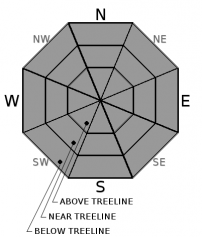| Sunday | Sunday Night | Monday | |
|---|---|---|---|
| Weather: | Partly cloudy skies. | Partly cloudy skies, becoming mostly cloudy. | Mostly cloudy skies, becoming sunny. |
| Temperatures: | 43 to 48 deg. F. | 27 to 32 deg. F. | 45 to 50 deg. F. |
| Mid Slope Winds: | SW | SE | S to SW |
| Wind Speed: | Light winds | Light winds | Light winds |
| Expected snowfall: | 0 | 0 | 0 |
| Sunday | Sunday Night | Monday | |
|---|---|---|---|
| Weather: | Partly cloudy skies. | Partly cloudy skies, becoming mostly cloudy. | Mostly cloudy skies, becoming sunny. |
| Temperatures: | 38 to 44 deg. F. | 27 to 32 deg. F. | 41 to 47 deg. F. |
| Ridge Top Winds: | SW | SE | S to SW |
| Wind Speed: | Light winds | 10 to 15 mph. Gusts to 25 mph increasing to 35 mph after midnight. | 15 to 25 mph with gusts to 45 mph. |
| Expected snowfall: | 0 | 0 | 0 |






















